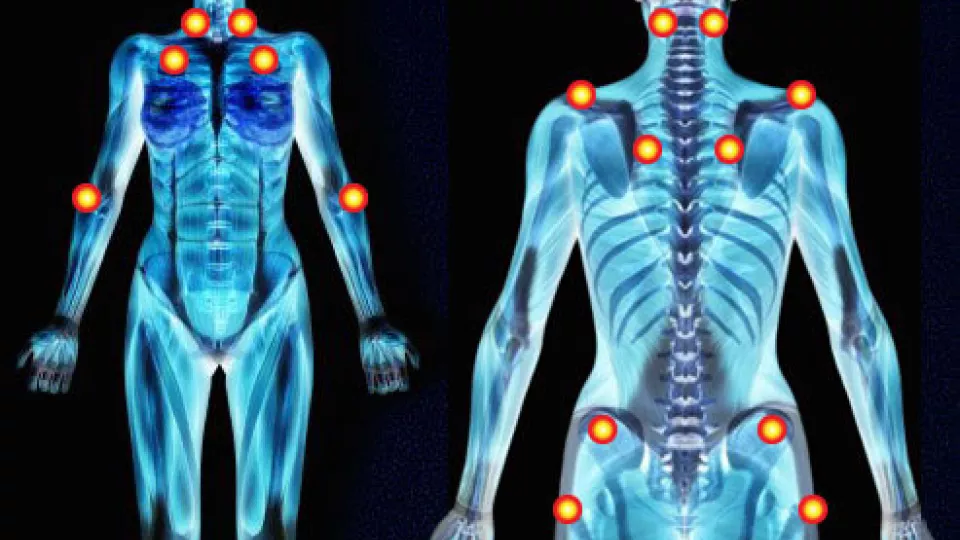
Not Only an Adult Condition, Fibromyalgia Affects Kids Too
Fibromyalgia tender points as outlined by the American College of Rheumatology. Credit: 3D4Medical.com
Unseen by lab tests and the naked eye, fibromyalgia is an “invisible” condition characterized by chronic musculoskeletal pain and fatigue. Because there is no physical evidence of disease, fibromyalgia is often misunderstood and assumed to by a psychological disorder—in reality, it is the result of a dysregulated and overactive nervous system.
This painful syndrome currently affects around 5 million people across the U.S. While the majority of those affected are adult women, fibromyalgia can also plague young kids.
To find out more, we interviewed Jeffrey I. Gold, PhD, about the unique presentation of fibromyalgia in children.
As director of the Pediatric Pain Management Clinic at Children’s Hospital Los Angeles, you see patients with various painful conditions. How do you determine that a child has fibromyalgia?
Gold: As with all patients, we begin with a comprehensive bio-psycho-social evaluation. This exam is conducted by both a physician and mental health provider and covers all bases of physical and psychosocial health.
We then conduct blood and urine tests, which can help rule out other possible diseases such as lupus or juvenile arthritis. If we suspect the child has fibromyalgia, we will conduct a tender point evaluation during the physical exam and measure the patient’s response.
We also ask parents and siblings about their history with anxiety, depression, fatigue and pain, as fibromyalgia symptoms can often run in families.
Fibromyalgia usually affects women between the ages of 20 and 50. How do you see this condition affect younger patients?
In adults, the pain of fibromyalgia is accompanied by symptoms like anxiety, depression and chronic fatigue, which can impact their daily functions. We see this same comorbidity in young children, but instead of problems with substance abuse or missing work, kids will be absent from school and suffer academically.
Children with fibromyalgia will also fall behind socially because they are in too much pain to take part in extracurricular activities and develop meaningful relationships with peers. They may be teased or bullied because kids their age don’t understand what’s wrong with them.
What are the treatment options for these children?
Fibromyalgia is a disease of the nervous system—a connected disease of the body and brain. Because of this, we use a combination of medication-based, mind-based and body-based therapies to heal the body as a whole. Treatment options include combinations of antidepressants or other medications, psychotherapy, deep breathing exercises, biofeedback, physical therapy, massage and acupuncture.
Our goal is to have these kids manage their condition so they can get back to their lives.


